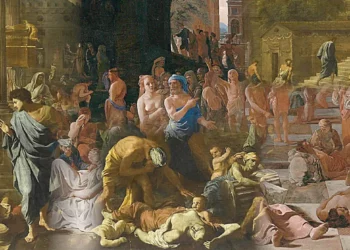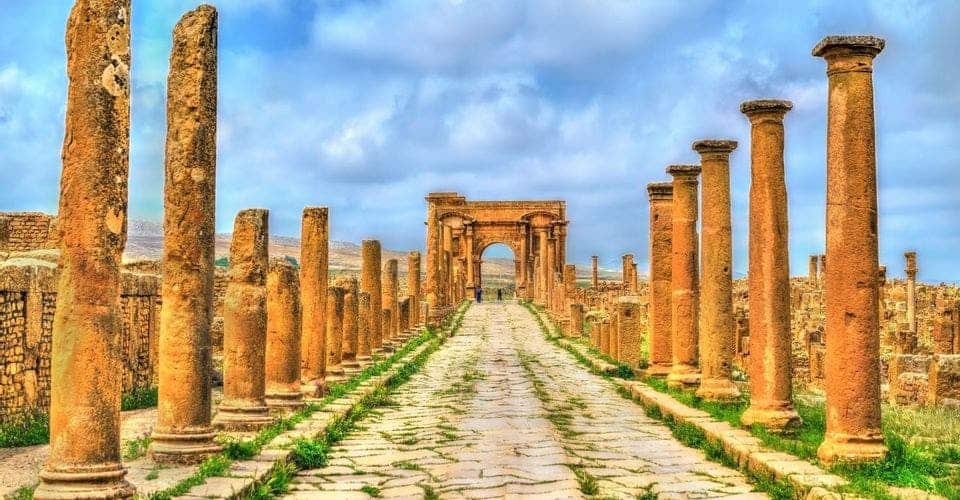
During its zenith under the reign of Septimius Severus in 211 C.E., the mighty Roman Empire stretched over much of Europe, from the Atlantic to the Ural Mountains and from modern-day Scotland to the Sahara or the Arabian Gulf. Crucial to maintaining dominion over such a large empire was Rome’s huge and intricate network of roads that remained unparalleled even a thousand years after its collapse.
It is estimated that the Roman road network was more than 400,000 kilometers long, out of which over 80,000 km were stone-paved. Like arteries, these marvelous feats of engineering ferried goods and services rapidly and safely, connecting Rome, “the capital of the world”, to the farthest stretches of the empire, and facilitated troop movements to hastily assemble legions for both border defense and expansion. Encompassing both military and economic outcomes, roads were truly central to Rome’s political strategy.
While the Romans didn’t invent road building, they took this Bronze Age infrastructure to a whole new level of craftsmanship. Many of these roads were so well designed and built that they are still the basis of highways that we see today. These include Via Flaminia and Britain’s Fosse Way, which still carry car, bike, and foot traffic. The answer to their longevity lies in the precision and thoroughness of Roman engineering.
Roman road types and layout
Just like today, the Roman transportation network consisted of various types of roads, each with its pros and cons. These ranged from small local dirt roads to broad, stone-paved highways that connected cities, major towns, and military outposts.
According to Ulpian, a 2nd-century C.E. Roman jurist and one of the greatest legal authorities of his time, there were three major types of roads:
- Viae publicae. These were public or main roads, built and maintained at the expense of the state. These were the most important highways that connected the most important towns in the empire. As such, they were also the most traveled, dotted by carts full of goods and people traveling through the vast empire. But although they were funded by the state, not all public roads were free to use. Tolls were common at key points of crossing, such as bridges and city gates, enabling the state to collect import and export taxes on goods.
- Viae militares. Although Roman troops marched across all types of roads and terrain for that matter, they also had their dedicated corridors in the road network. The military roads were very similar to public roads in design and building methods, but they were specifically built and maintained by the military. They were built by legionaries and were generally closed to civilian travel.
- Viae privatae. These were private roads that were built and maintained by citizens. These were usually dirt or gravel roads since local estate owners or communities did not possess the funds nor the engineering skills to match the quality of private roads.
- Viae vicinales. Finally, there were secondary roads that lead through or towards a vicus or village. These roads ran into high roads or into other viae vicinales and could be either public or private.
The first and most famous roman road was Via Appia (Appian Way) which linked Rome to Capua, covering 132 Roman miles or 196 kilometers. Via Appia was highly typical of how the Romans thought about building roads. It was very much a straight line that all but ignored geographical obstacles. The stretch from Rome to Terracina was essentially one 90-km long straight line.
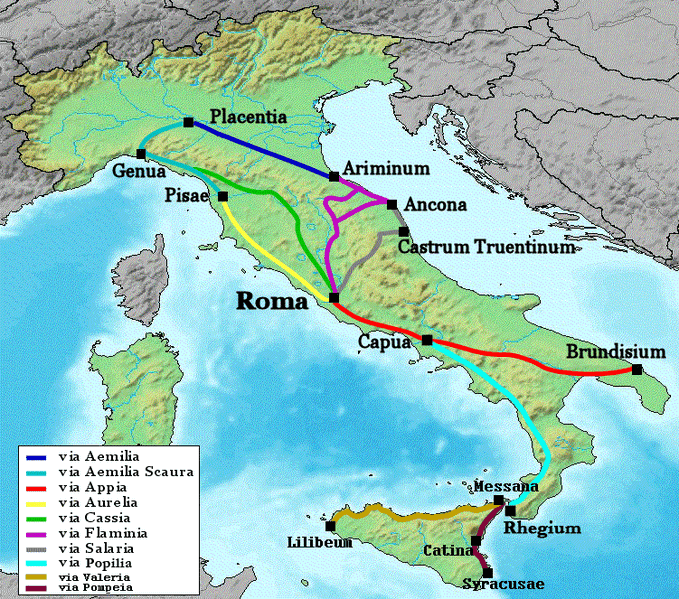
Other important Roman roads of note include Via Flaminia which went from Rome to Fanum (Fano), Via Aemilia from Placentia to Augusta Praetoria (Aosta), Via Postumia from Aquileia to Genua (Genoa), and Via Popillia from Ariminum (Rimini) to Padova in the north and from Capua to Rheghium (Reggio Calabria) in the south.

These roads were typically named after the Roman censor that paved them. For instance, Via Appia was named after censor Appius Claudius Caecus, who began and completed the first section as a military road to the south in 312 B.C.E during the Samnite Wars when Rome was still a fledgling city-state on a path to dominate the Italic peninsula.
While they had curved roads when it made sense for them, the Romans preferred taking the straightest path possible between two geographical points, which led to intriguing zig-zag road patterns if you zoom out far enough.
Building a straight road, especially over large distances, is a lot more technically challenging than meets the eye. Mensors were essentially the equivalent of today’s land surveyors who were tasked with determining the most appropriate placement and path a new road should take, depending on the terrain and locally available construction materials. These surveyors were well trained and employed standardized practices.
For instance, the incline of a road could not exceed 8 degrees in order to facilitate the movement of heavy carts packed with goods. To measure slopes, mensors employed a device called a khorobat, a 6-meter ruler with a groove on top into which water was poured. Road construction often started from two simultaneous opposing points that eventually joined in the middle. To draw perpendicular lines on the landscape and make sure the roads were straight and actually met, the surveyors employed the thunder or groma, the ancestor to the modern protractor, which consisted of a cross, at the four ends of which threads with lead weights were tied. When one weight on the same piece of wood correctly lined up with the one in front of it, the surveyor knew that the path of the road was straight.
Mistakes were bound to occur, which explains the small changes in direction that archeologists have found when excavating these ancient roads. When roads had to inevitably bend due to the terrain, at the bends the roads became much wider so that carriages traveling towards each other could safely pass each other without interlocking the wheels.
Roman roads purposely avoided difficult terrain such as marshes or the immediate vicinity of rivers. When they had to cross a river, Roman engineers built wooden or stone bridges, some of which survive and are still in use to this day, like the 60-meter-long Pons Fabricius, which was built in 62 B.C.E. and connects an island in the Tiber River with the opposite bank. Other times, tunnels were dug through mountains, in the spirit of straight Roman roads.
How Roman roads were made
After completing all the geodetic measurements and projections, the Roman surveyors marked the path of the future road using milestones. All trees, shrubs, and other vegetation that might interfere with the construction of the road were razed. Marshes were drained and mountains would be cut through, if needed.
The average width of an ancient Roman road was around 6 meters (20 ft.), although some large public roads could be much wider.
According to the writings of Mark Vitruvius Pollio, an outstanding Roman architect and engineer who lived in the 1st century C.E., Roman public roads consisted of several layers:
- Foundation soil – depending on the terrain, builders either dug depressions on level ground or installed special supports in places where the soil subsided. The soil is then compacted and sometimes covered with sand or mortar to provide a stable footing for the multiple layers above.
- Statumen – a layer that was laid on compacted foundation soil, consisting of large rough stone blocks. Cracks between the slabs would allow drainage to be carried through. The thickness of this layer ranged from 25 to 60 cm.
- Rudus – a 20-cm-thick layer consisting of crushed rock about 5 cm in diameter in cement mortar.
- Nucleus – a concrete base layer made of cement, sand and gravel, that was about 30 cm thick.
- Summum dorsum – the final layer consisting of large 15-cm-thick rock blocks. But more often fine sand, gravel, or earth was used in the top layer, depending on the available resources at the workers’ disposal. This layer had to be soft and durable at the same time. Paved roads were very expensive and were typically reserved for sections located near and inside important cities. When pavement (pavimentum) was used, large cobblestones of basalt laval were typically used in the vicinity of Rome.
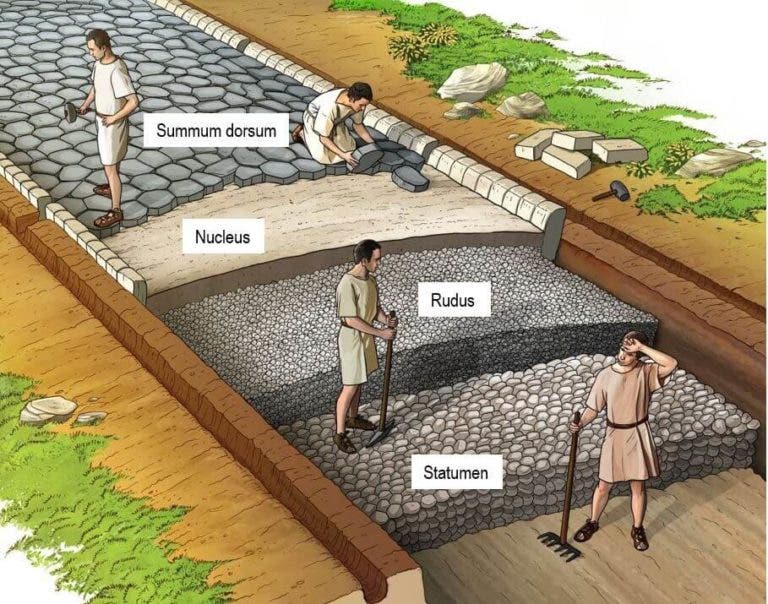
This puff pie structure ensured that the roads would be very sturdy. Roman roads also had a slightly curved surface, a clever design that allowed rainwater to drain over to the side of the road or into drainage ditches, thereby keeping the road free of puddles.
Upkeep was also very important. In fact, the Romans were so meticulous about maintaining their roads — which they considered the backbone of their empire — that they had regularly placed markers along the side of the road, indicating who was in charge of repairing that particular section of the road and when the last repair was made. That’s remarkably modern accountability-based upkeep.
Swift travel and easy navigation
Rome’s unparalleled extensive network of roads was crucial for both expanding and maintaining its borders, and allowing the economy to flourish. Rome’s legions could travel 25 to 50 kilometers (around 15 to 31 miles) a day, allowing them to respond relatively quickly to outside threats or internal uprisings. This means that costly garrison units at frontier outposts could be kept to a minimum as reinforcements could be mustered within weeks or even days.
Imperial Rome even had a postal service, which exploited the road network to its fullest. By switching fatigued horses with fresh ones, a postman could relay a message up to 80 kilometers from its destination within a single day. If the message was urgent, maybe even farther. For the slow-paced world of antiquity, this was incredibly fast and efficient communication, making the state far more agile than its ‘barbarian’ neighbors.

Besides the military, Rome’s roads were used by travelers from all parts of society , from slaves to emperors. Although traveling across the empire without maps might seem daunting, travelers could easily make their way to their destination thanks to large pillars that dotted the side of the road. These milestones, which could be as high as four meters and weigh two tons, indicated who built or was tasked with maintaining the road, as mentioned earlier, but also informed travelers how far the nearest settlement was. The pillars were modeled after a marble column in gilded bronze erected inside the Roman Forum in 20 B.C. under Caesar Augustus. It represented the starting point for all the roads in the empire, hence the phrase ‘All roads lead to Rome’.
All important Roman roads and notable stopping places along them were cataloged by the state. The catalog was updated regularly in the form of The Antonine Itinerary, which at its peak contained 225 lists. Each list, or iter, gives the start and end of each route, with the total mileage of that route, followed by a list of intermediate points with the distances in between.
There were also maps — but not the landscape kind you’re imagining. Instead, these were schematic maps known as itinerarii that originally only listed cities along a route, but gradually these guidelines became pretty complex. The itinerarii grew to include roads, each with their own number and city of origin, and how they branched, alongside the length in Roman miles (equal to 1,000 paces or 0.92 English miles) and the most intermediate cities and stops along the way.
Roman roads even had service stations
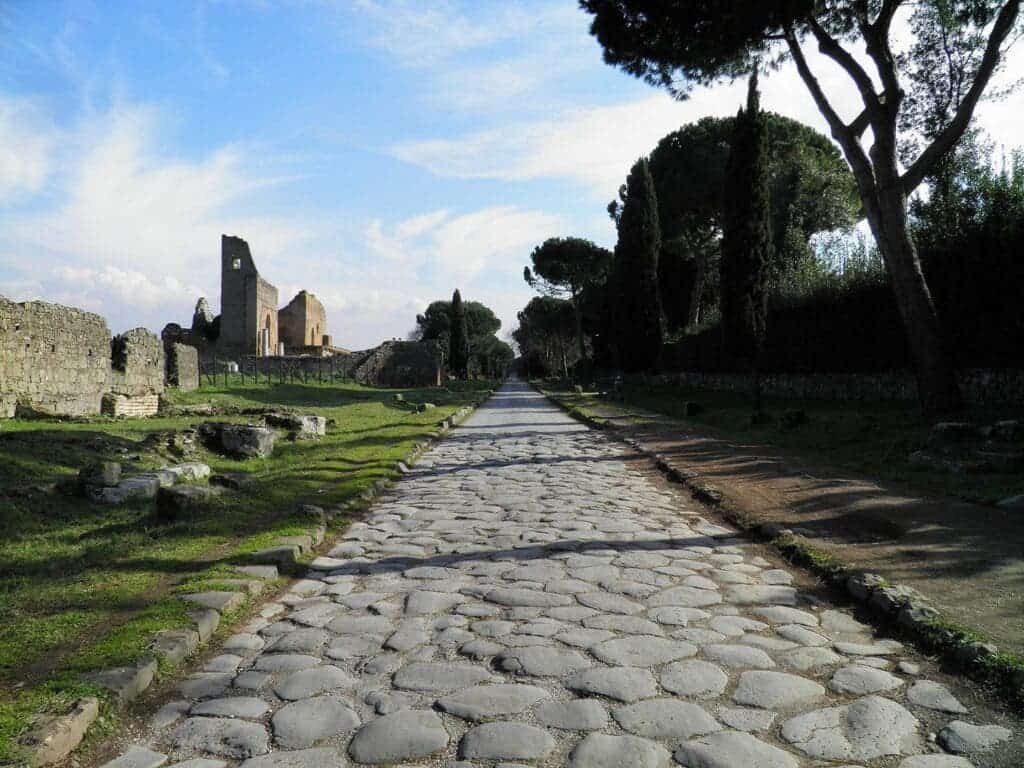
Every 15-20 kilometer (around 9-12 mi) or so along a public road, it was common to find rest stops where postmen could change horses for a fresh mount. These government stables were known as mutationes. Alongside these establishments, travelers could expect to find mansiones, a sort of early version of an inn where people could purchase basic lodgings for themselves and their animals, as well as eat, bathe, repair wagons, and even solicit prostitutes. In more busy intersections, these service stations morphed into small towns complete with shops and other amenities.
Roman roads were surprisingly safe
The flow of trade and the taxes that went with it were crucial to the Roman empire, so any disruption caused by bandits and other roadside outlaws was unacceptable. A special detachment of the army known as stationarii and beneficiarii regularly patrolled public roads and manned police posts and watchtowers to monitor traffic. They also doubled as toll collectors.
Roman roads tended to roll through sparsely populated areas, and special attention was given to clearing vegetation and digging ditches along the sides of the road. This reduced the cover that bandits could use to ambush carts and law-abiding citizens.
To this day, hundreds if not thousands of routes across Europe and the Middle East are built right on top of old Roman roads that have remained in use throughout the ages. Although suffering from major deterioration due to neglect, Roman roads continued to serve Europe throughout the Middle Ages. In fact, Roman road-building technology wasn’t surpassed until the late 19th century, when Belgian chemist Edmund J. DeSmedt laid the first true asphalt pavement in the front of the city hall building in Newark, New Jersey. Of course, Roman roads would be totally impractical today for busy car traffic, but one can only stand in awe in front of their durability, in stark contrast to modern roads that quickly form potholes after a mild winter.



